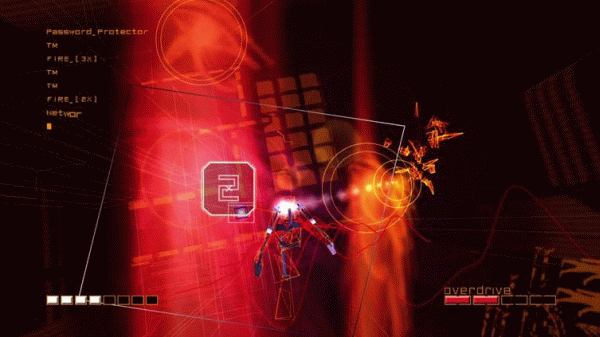Rez HD Review
Rez HD
The 360 just got itself another essential title. Prepare yourself for 'synesthaesia', as the classic Mizuguchi title gets the HD treatment.
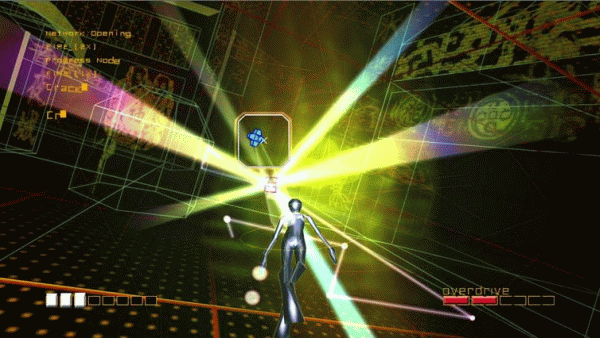
Verdict
Be still my beating heart.
I mean it. I’ve just finished the boss battle on area 4 of Rez HD and my heart is going at a rate I haven’t felt since I last went jogging. Blame the visuals, blame the music, blame the gameplay, but the whole experience seems to have pushed my pulse rate to the point of no return. I’m not entirely sure whether this is a good thing or a bad thing. What I am sure of is that Rez HD is an extraordinary game.
The original Sega version is spoken of in hushed tones whenever and wherever the ‘games as art’ debate springs up. Fusing his love of electronic music and club culture with his admiration for the art and ideas of Russian abstract painter, Vassili Kandinski, Tetsuya Mizuguchi created a stunning, stylised 3D on-rails shoot-em-up that looked, sounded and played unlike anything before. As a hacker trying to break through the security systems of a nutty super computer, you send your digital avatar floating through a series of stripped-back electronic landscapes, using a reticule to lock on to the various polygonal entities that stand in between you and the heart of the system. Shooting and collecting blue forms gives your avatar the power to evolve into a more recognisably human shape, the different stages effectively working as lives and offering you more offensive firepower. Blasting prismatic cubes that give off light repeatedly takes you to the next security level. At the end of ten security levels there’s a boss, and beating him unlocks the next area. 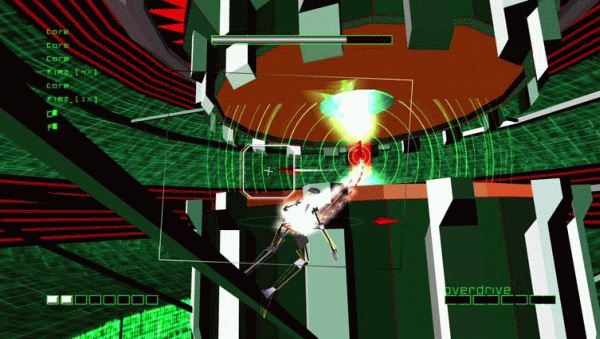
Sounds simple – and it is simple – but what made the original Rez so special was the way that the gameplay, the graphics and the music, not to mention the radical use of rumble feedback, all come together in one remarkably coherent package. For the time, the visuals were astonishing; the clean vector lines of the landscape moving at incredible speed before you, with the clean vector lines and simple shaded polygons of the enemies blossoming into glorious neon blooms as they explode, your missiles tracing their way across the screen towards them. 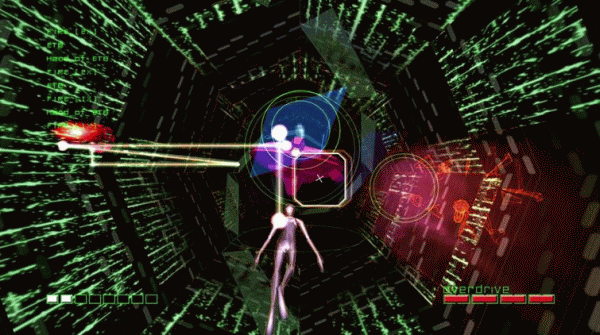
Mizuguchi worked with leading dance and trace artists to create the pounding soundtrack, then did three very clever things. First, he used samples for the sound effects that could work within the music tracks, meaning that your actions onscreen added cool new elements to the soundtrack as you played (a feature he’s take further in Q Entertainment’s puzzle game, Lumines). Secondly, he made visual elements – including your avatar and parts of the background – pulse in time with the music. Thirdly, he synchronised the beats on the soundtrack to rumble pulses in the controller, meaning Rez was a game you could actually feel in the same way you could feel the big bass beats in a noisy club. Arty types call this multi-sensory experience ‘synesthaesia.’ We’ll just label it plain awesome.
This whole approach has been immensely influential – even if you won’t feel that influence in the average FPS or racing game. Without Rez, Geometry Wars, Wipeout Pure, Lumines, Frequency (and through that, possibly, Guitar Hero) might not exist, at least in the form we know them today. Plus, it freed other developers to think in more abstract, less photo-realistic terms. For this alone, it deserves a place in gaming history.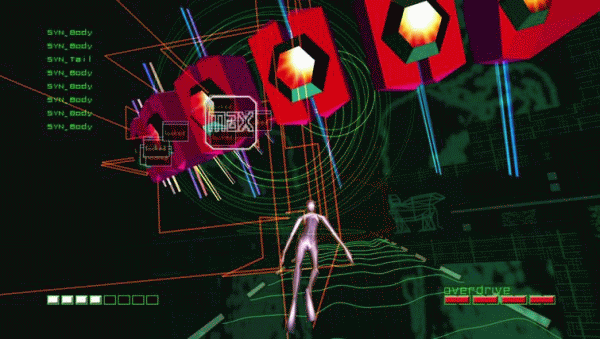
But we’re not here for a history lesson. All you need to know is that Rez HD is Rez reaching its full potential. The visuals, already glorious in standard definition on the PS2 and Dreamcast, now look incredible in full HD on the Xbox 360. Those amazing high-coloured blooms are things of beauty, and the clean lines behind them only look cleaner and more precise. Play it on a big LCD or plasma TV, plug some headphones in or whack the surround sound system up to the point where other members of the household might complain (I recommend the former option if you want to maintain domestic harmony) and Rez is an unbelievable experience – dazzling, hypnotic and totally immersive.
The gameplay remains unaltered and undeniably simplistic, but what hits you playing Rez HD is how polished and lacking in frustration the action is. You always have just enough time to clear obstacles, blast enemy missiles or shoot hostile forces and just enough time to grab power-ups. The boss battles are brilliant; each one a spectacular fight of several different acts, and each past the first being tricky enough to hold you back for one or two goes without proving impassable on the third or fourth. 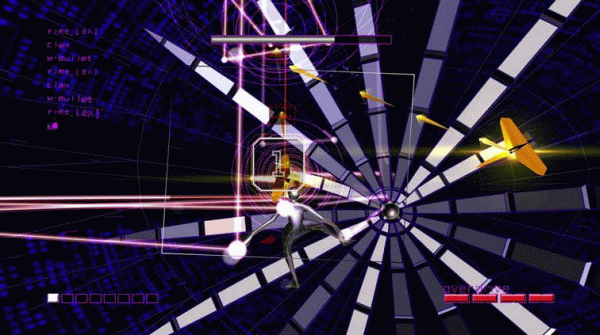
The fourth boss I alluded to earlier is an all-time classic, the flying saucer in control mustering all sort of shapes from the blocks surrounding him to roll or stomp you out of existence, with the sequence ending up as a frantic chase. The relentless, fluid speed of the graphics and the big beats on the soundtrack turn it into something truly exhilarating. At its best, Rez is every bit as exciting as Call of Duty 4, Project Gotham 4 or any other next-gen game that you could mention. This is something that isn’t mentioned enough in all the high-falutin’ talk of art.
Of course, it’s not huge. You could easily clear all four main areas with an hour or two. Get a 100 per cent rating for data analysis and you unlock a fifth area, leading to a final boss battle and the proper completion of the game. Polishing this off reveals a final secret stage, but that’s basically it. Finishing an area also unlocks a score attack mode – now with online leaderboards – but I don’t think Rez is the new Geometry Wars as far as that’s concerned. Even the chance to fiddle with various visual treatments and reverb effects won’t hold your attention for long once you’ve cracked the core content. Rez is a game to be amazed by, and one you will keep coming back to periodically just because you fancy the experience, but it’s not a game that will keep you immersed for days on end.
Now, on the Dreamcast and PS2, where you were paying the full price for the game, value for money was an issue. As an Xbox Live Arcade download, however, all such doubts are blown clean out of the water. For less than £7 you get the chance to enjoy one of the most magnificent and thrilling ‘arthouse’ games ever made. There’s a very small chance you might not like it, but you really, really ought to experience it. It’s not something you’ll ever understand by reading this or by looking at the screenshots – even watching video clips or listening to the soundtrack – it’s something that you’ve just got to look and hear and feel for yourself. If you have an Xbox 360, then you owe it to yourself to do just that.
”’Verdict”’
There’s not all that much to the gameplay, but who cares when that’s just one part of such an overwhelming sensory experience. Essential.